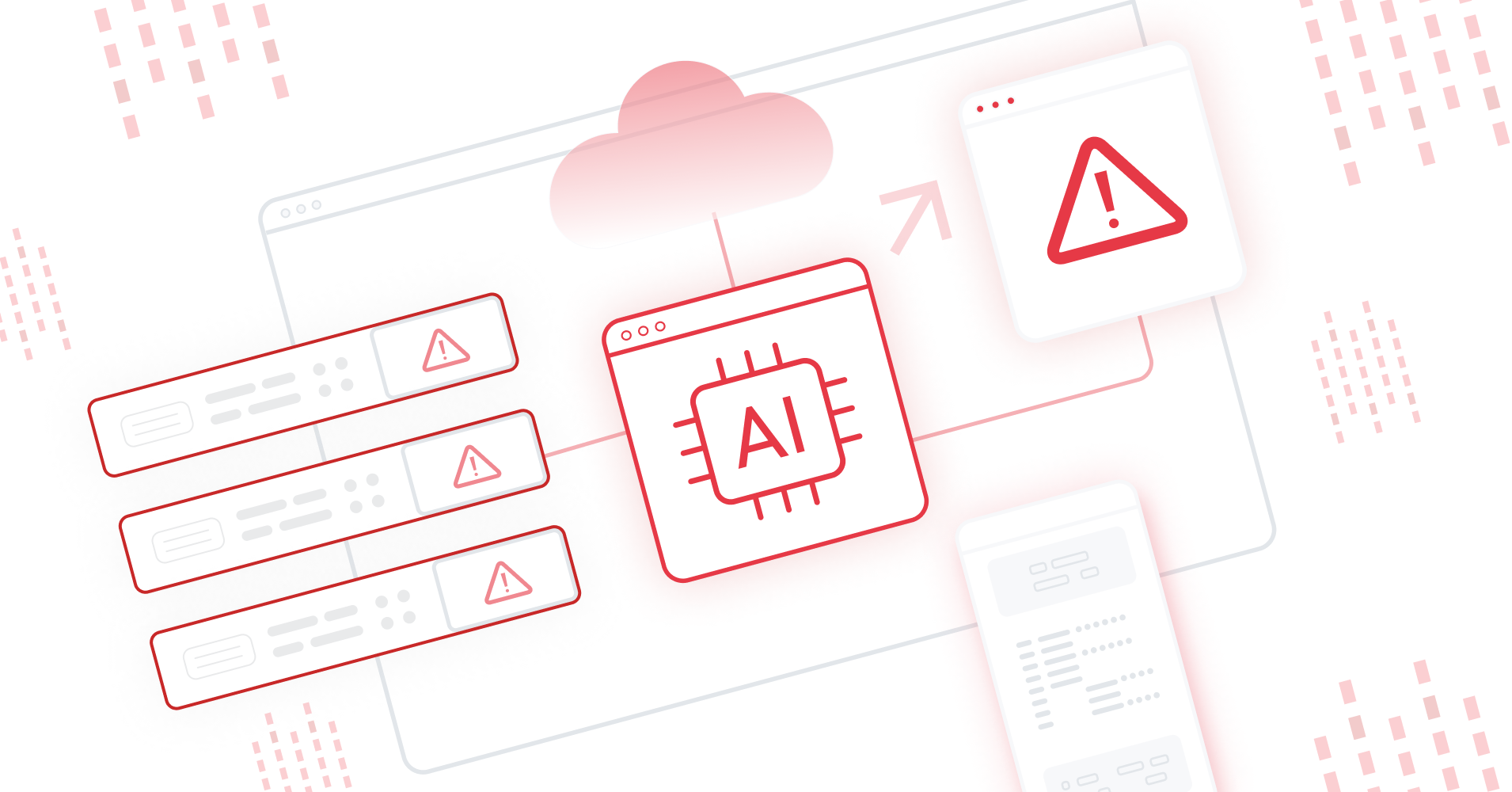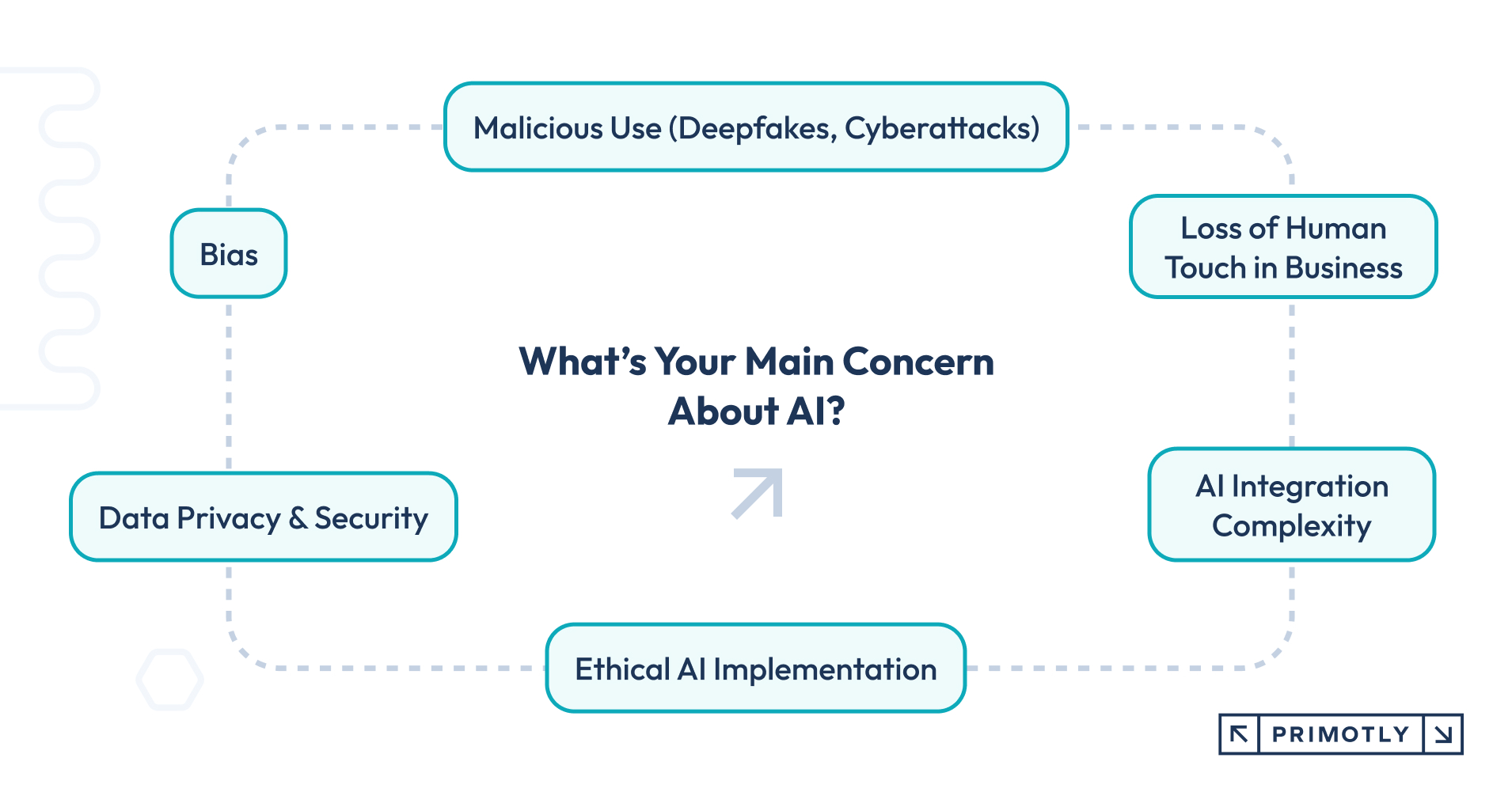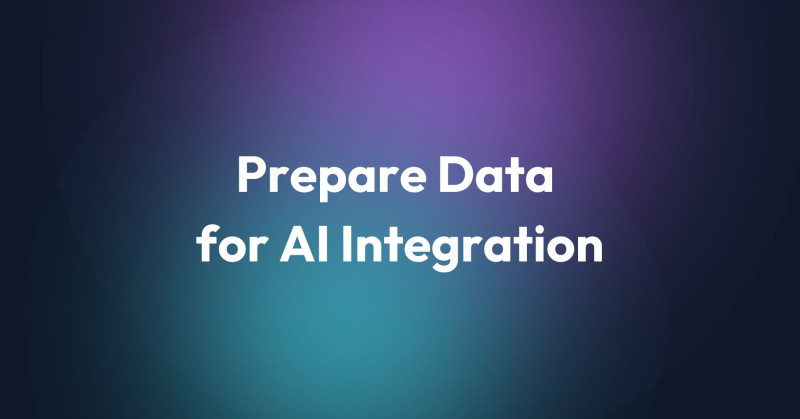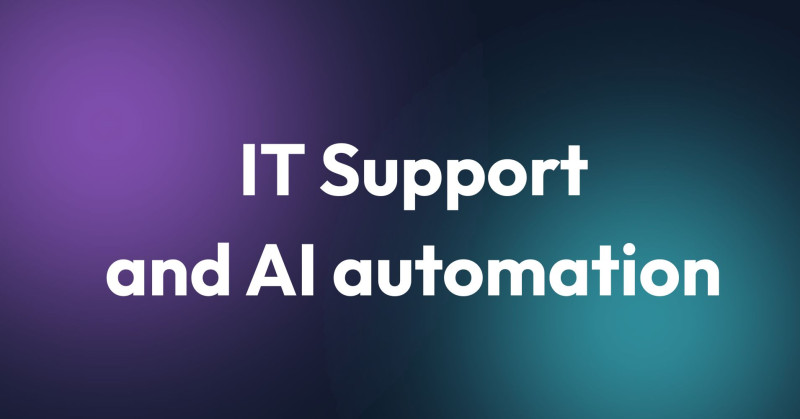Every new technology, especially one that brings significant change, raises concerns. Ensuring safety in AI development is a collective responsibility for all stakeholders involved. The same goes for artificial intelligence, which has its share of both supporters and critics, especially concerning AI safety. Month by month, as tools improve and new ones emerge, AI is becoming an increasingly safe solution, enabling businesses to grow faster and more efficiently. The more we understand potential risks, the better equipped we are to protect ourselves from them.

We consulted our AI developer about the most common concerns about integrating AI into daily operations. Let’s find out what’s true and what’s a myth.
Dangers of Artificial Intelligence: Is AI Dangerous?
That’s a great question, and it’s one that comes up a lot as AI, including ChatGPT, becomes more integrated into our lives. The short answer is that AI itself isn’t inherently dangerous—it's a tool, and like any tool, its impact depends on how it’s used, designed, and controlled, emphasizing the importance of AI safety..
For example, AI can have incredibly positive applications. It’s helping us advance medicine, optimize logistics, and tackle climate change. But at the same time, there are legitimate risks. If AI systems are trained on biased data, they can produce AI-generated outputs that perpetuate these biases. biased results. If they’re used without proper oversight, errors can go unnoticed, or worse, decisions can be made that harm people.
Then there’s the question of malicious use. Deepfakes, automated cyberattacks, and misinformation campaigns are all examples of how AI could be exploited. And, of course, there’s the broader concern about job displacement and how we as a society handle that transition.
The key to keeping AI safe lies in responsible development. Things like ethical design, transparency, and having humans involved in critical decision-making can make a huge difference. Regulations also play a role—governments and organizations need to work together to set clear boundaries for AI use, ensuring data privacy and security are prioritized.
So, while AI has risks, those risks aren’t insurmountable. When managed responsibly, AI can do a lot of good, but it’s up to us to ensure it’s developed and used in ways that benefit everyone.
Do I need technical expertise to use AI in my company?
Modern AI tools have evolved to become much more user-friendly, similar to how website builders like Wix made web development accessible to non-programmers. While having technical expertise is beneficial, it's not always necessary for basic AI implementation.
What's more important is having a clear understanding of your business processes and goals. However, for more complex AI development, you might want to either hire an AI consultant or upskill some of your existing team members in machine learning.
You should choose the right level of technological complexity for your organization's capabilities in the use of AI.
Bias in AI: Can AI make biased or unethical decisions?
AI systems are like mirrors - they reflect the data they're trained on, which can include biases that pose dangers of AI. If historical data contains biases, the AI can perpetuate these biases in its decisions.
For example, if your historical hiring data shows a gender imbalance, an AI recruitment tool might continue this pattern unless specifically designed to address it, highlighting the dangers of AI in recruitment. The good news is that we can actively work to To prevent AI bias, it's essential to implement ethical AI practices throughout the development process. in our systems.
It requires careful data selection, regular monitoring of AI decisions, and implementing checks and balances to ensure that AI bias is minimized. This is why human oversight remains crucial in AI decision-making processes, especially in mitigating the dangers of AI.
Trust in AI: Is AI safe for handling sensitive business and customer data?
Data security in AI systems is comparable to a bank vault - the security measures must be sophisticated, multi-layered, and prioritize AI safety. Modern AI platforms typically incorporate enterprise-grade security features, including encryption, access controls, and compliance with regulations like GDPR and HIPAA.
However, security depends greatly on the implementation of AI algorithms. It's crucial to work with reputable vendors, maintain strict data governance policies, and regularly audit your AI systems' security measures to ensure the safety of AI-generated data. The key is treating AI security as an ongoing process rather than a one-time setup.
Read more: How Google AI and generative AI Helped the Maritime Shipping Companies in 2023?
Benefits of AI: Does AI actually deliver results, or is it overhyped?
Based on my experience implementing AI across various industries, AI delivers measurable results when properly implemented with realistic expectations and effective AI algorithms, especially in environments that prioritize explainable AI.
AI and machine learning show impressive results in specific applications while still having limitations.
For instance, one of my retail clients saw a 23% increase in customer service efficiency after implementing AI chatbots, but this came after careful planning and integration with their existing systems.
Try identifying specific, measurable problems that AI models can solve rather than viewing it as a magical solution to all business challenges.

How do I avoid becoming too dependent on AI vendors?
This is similar to managing any critical business relationship - diversification and maintaining control over AI development and automation are key. I recommend developing a multi-vendor strategy and maintaining ownership of your data and processes.
Ensure your AI implementations are well-documented and, where possible, use open standards that allow for vendor switching if needed. It's also wise to build internal capabilities over time in AI technologies, even if you're primarily relying on vendors for implementation.
Risks Posed by AI and Data Privacy: What are the legal risks of using AI in my business?
The legal landscape around AI is like a developing neighborhood - it's constantly evolving alongside advancements in AI technologies. The main areas of concern include data privacy compliance, algorithmic bias, and accountability for AI decisions.
To mitigate these risks, ensure your AI implementations comply with relevant regulations (like GDPR for European data), maintain transparent decision-making processes, and keep detailed documentation of your AI systems' operations. Regular legal audits and staying informed about emerging AI regulations in 2024 are essential for maintaining AI safety.
How can I integrate Artificial intelligence with my existing business tools and systems?
Think of AI integration like adding a new player to a well-established sports team - it needs to work seamlessly with existing players. Modern AI solutions typically offer APIs and integration tools that can connect with common business software.
I suggest starting with a thorough analysis of your current systems and choosing AI solutions that complement rather than disrupt your existing workflows. This might involve using middleware or custom integration solutions to ensure that AI technologies facilitate smooth data flow between systems.
Will AI make my business lose the human touch with customers?
AI should enhance, not replace, human interactions. Think of it as a skilled assistant that handles routine tasks, allowing your team to focus on meaningful customer engagement.
For example, AI can handle initial customer inquiries, but complex issues or emotional situations should always be routed to human agents to maintain trust in AI systems. The goal is to use AI to create more opportunities for meaningful human interaction rather than replacing it entirely.
How to Address AI Challenges Accurately?
AI is a tool, not an independent force. The way we design, regulate, and integrate it into our lives will determine whether it remains a catalyst for progress or a source of unforeseen risks. By taking a thoughtful and proactive approach, we can harness AI’s benefits while keeping its dangers in check.





















